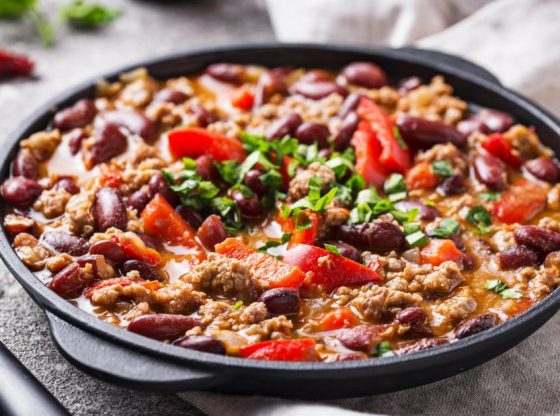
If the post-holiday slump is hitting a little harder for you in 2022, you’re not the only one. It’s cold and icy across the country, and many of us feel like staying indoors until spring. It’s times like these when we all need comfort, and a hearty bowl of chili will cure what ails you: It might even be an antidepressant, according to a recent study.
Though various regions of the Southwest and Central America lay claim to being the birthplace of chili — San Antonio, New Mexico, northern Mexico — the food is as diverse as the population of North America, according to Robb Walsh, author of “The Chili Cookbook.”
The Aztecs and other Mesoamerican cultures made chile pepper-spiced stews with turkey, lobster and frogs, he noted, while chile peppers have been grown in New Mexico since the 1600s.
Texas has a number of competing chili origin stories, including Mexican-American War soldiers who adapted the field dish known as chili con carne and the San Antonio Chili Queens, who sold chili from outdoor stalls in the late 1800s, long before food trucks hit the scene. William Gebhardt, a German immigrant in New Braunfels, brought chili spices to a wider public when he patented the first canned chili powder blend in 1899.
It’s that adaptability that makes chili so well suited for any palate, whether you’re an omnivore or vegan, whether you want to sweat through your scalp or feel a slow burn, or whether you want to make yours with ground beef, chunks of lamb, five kinds of beans or even tofu.
As for the argument over beans’ place in a chili bowl, it’s not a recent phenomenon — they’ve been in the mix for at least a century. “Adding beans and other vegetables to chili was a response to the meat rationing of the World Wars,” Walsh said. Frugal home cooks used the produce from their victory gardens to get creative with their chili recipes, and the new traditions stuck.
No matter your eating habits, there’s a chili out there for you. Find your favorite chili from the suggestions below, or try a new variation and spice things up this month.
As any Texan will likely tell you, there are no beans in traditional chili con carne — the focus is on chile peppers and meat. “Texans don’t put beans in the chili for the same reason that Italian-Americans don’t dump spaghetti into the red sauce,” Walsh said. “Cincinnati chili and Texas chili are essentially sauces served with other foods, often with beans on the side.”
Make it with chunks of chuck roast or try Lady Bird Johnson’s famous recipe that calls for ground beef, then feel free to gussy it up with as many toppings as you like. It’s also ideal as a burrito or enchilada filling, ladled over fries or tater tots, or as the crowning glory of Frito Pie.
White chicken chili
“White” chili gets its name from a few substitutions: Instead of red meat and tomatoes, chicken and its broth are used, and instead of red chile peppers, green chiles are the stars of the show here. Many recipes also include white beans, such as cannellini or Great Northern.
[“source=cnn”]
